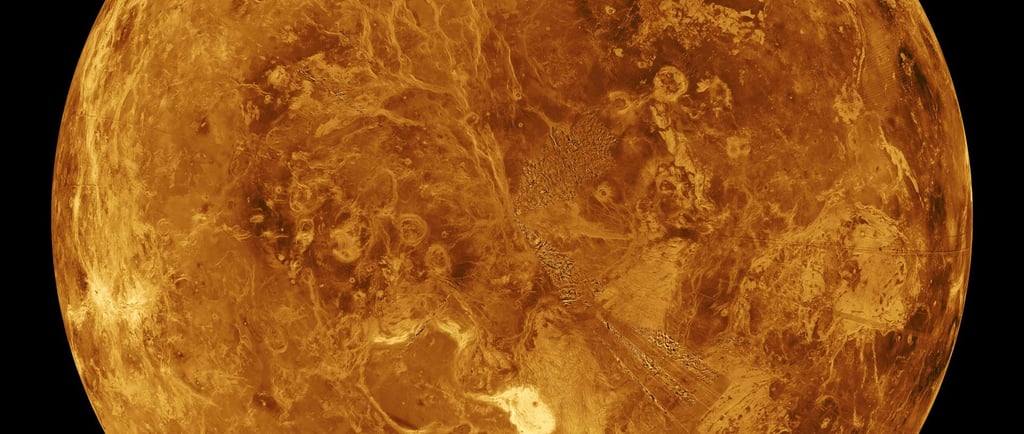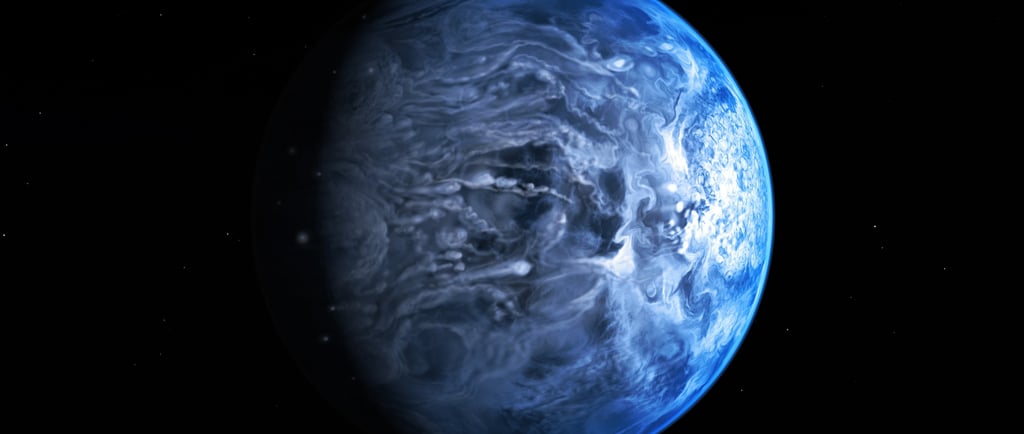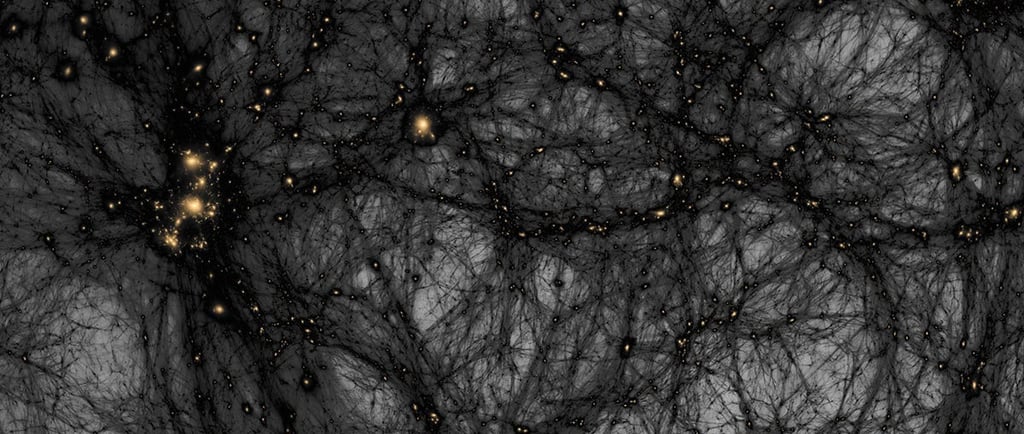Thrilling New Space Discoveries: Unveiling the Mysteries of the Cosmos!
Explore fresh space discoveries and fascinating cosmic facts with easy-to-understand summaries, plus links to white papers and documents for further exploration!
Phosphine on Venus: Evidence of Extraterrestrial Life?
In September 2020, a significant scientific discovery captured global attention and reignited interest in the exploration of Venus. Researchers detected the presence of phosphine in the planet's atmosphere, a chemical compound that, on Earth, is associated with biological processes. This finding could have profound implications for astrobiology and our understanding of life in the universe.
The Discovery of Phosphine
Phosphine (PH3) is a chemical compound found on Earth in environments with little to no oxygen, such as swamps and animal intestines. The detection of phosphine on Venus was made through observations with the James Clerk Maxwell Telescope in Hawaii and the Atacama Large Millimeter/submillimeter Array (ALMA) in Chile. These telescopes identified spectral signatures of phosphine about 50 km above the surface of Venus.
Scientific Significance
The significance of this discovery lies in the fact that phosphine on Earth is almost exclusively associated with biological processes. The presence of this gas in Venus's atmosphere suggests that, in the absence of alternative chemical or geological explanations, there could be microbial life producing phosphine in the planet's clouds. Certain microorganisms on Earth can thrive in extreme environments, and this possibility is being considered for Venus as well.
Methodology and Techniques Used
Scientists employed advanced spectroscopy techniques to identify phosphine in Venus's atmosphere. Spectroscopy analyzes how light interacts with matter, allowing the identification of different chemical compounds based on their specific signatures. The collaboration between telescopes around the world was crucial in confirming the presence of this compound accurately and reliably.
Implications and Next Steps
Despite the excitement, it is essential to approach this discovery with caution. Many questions remain unanswered, and alternative explanations need to be explored. Science is a continuous process of investigation and validation. Therefore, future space missions to Venus will be crucial in collecting additional data and verifying the origin of the phosphine.
Upcoming missions, such as NASA's VERITAS and the European Space Agency's (ESA) EnVision, are planned to investigate Venus in more detail. These missions could provide further insights into the planet's atmosphere and help determine whether phosphine is indeed an indicator of life or if unknown chemical processes could be producing it.
Exploring Venus
Venus, with its infernally hot surface and sulfuric acid clouds, has always been a challenging target for space exploration. However, the clouds where phosphine was detected have milder conditions that could theoretically support extremophile microorganisms—organisms that live in extreme conditions on Earth.
Conclusion
The discovery of phosphine on Venus has revived discussions about the possibility of life beyond Earth and highlighted the importance of ongoing exploration of our solar system. As science advances, new technologies and space missions promise to bring more definitive answers about the presence of life on other planets.
For those interested in diving deeper into the scientific research on this fascinating topic, here are some sources:
Original Article in Nature Astronomy:
Greaves, J. S., et al. (2020). Phosphine gas in the cloud decks of Venus. Nature Astronomy. Link to article - https://www.nature.com/articles/s41550-020-1174-4
ALMA Research:
ALMA Observatory. (2020). ALMA Observations of Phosphine in the Atmosphere of Venus. ALMA Press Release. Link to article - https://www.aanda.org/articles/aa/full_html/2021/01/aa39932-20/aa39932-20.html
Discovery of Water on Exoplanets in the Habitable Zone: A New Frontier for Extraterrestrial Life
The quest for life beyond Earth has always captivated scientists and space enthusiasts alike. Recently, this quest took a monumental step forward with the discovery of water on exoplanets located in the habitable zone of their stars. This discovery not only increases the likelihood of finding extraterrestrial life but also helps us better understand the planetary processes that make a planet habitable.
What Are Exoplanets and the Habitable Zone?
Exoplanets are planets that orbit stars outside our solar system. The "habitable zone" of a star is the region around it where conditions are suitable for the existence of liquid water on a planet's surface — a crucial element for life as we know it.
The Discovery of Water
In 2023, scientists using the Hubble Space Telescope and the James Webb Space Telescope made an exciting discovery: clear signs of water in the atmospheres of exoplanets located in the habitable zone of their stars. Among the exoplanets studied, K2-18b stood out for showing compelling evidence of water vapor in its atmosphere, suggesting the presence of a hydrological cycle similar to Earth's.
Detection Methodology
Detecting water on exoplanets is a complex process that involves analyzing the light from stars as it passes through the planet's atmosphere. This light is captured and dispersed by telescopes, and scientists analyze the resulting spectrum to identify the chemical "fingerprints" of water. The combined use of the Hubble and Webb telescopes allowed unprecedented precision, increasing confidence in the data obtained.
Scientific Implications
The presence of water on exoplanets in the habitable zone has profound implications. Firstly, it suggests that these planets may have environmental conditions similar to Earth's, increasing the chances that they could support life. Additionally, the discovery of water vapor in the atmospheres of these planets indicates that they may have oceans or other forms of liquid water on the surface, which are essential for life.
Next Steps in Research
Despite the excitement, scientists are aware that there is much more to be investigated. Future space missions, such as the Large UV Optical Infrared Surveyor (LUVOIR) and the Habitable Exoplanet Observatory (HabEx), are being planned to study exoplanets in even greater detail. These missions promise to provide more precise data on the atmospheric composition and surface of these planets, as well as search for biosignatures — signs of biological processes.
Conclusion
The discovery of water on exoplanets in the habitable zone is a milestone in astrobiology and the search for extraterrestrial life. This discovery not only reinforces the possibility that we are not alone in the universe but also opens new avenues for exploration and understanding of planets outside our solar system.
Sources and Further Reading
For those interested in delving deeper into this fascinating discovery, here are some reliable scientific sources:
Study on K2-18b:
Tsiaras, A., et al. (2019). Water vapour in the atmosphere of the habitable-zone eight-Earth-mass planet K2-18 b. Nature Astronomy. Link to article - https://www.nature.com/articles/s41550-019-0878-9
James Webb Telescope Research:
Hubble Space Telescope. (2023). Water Detected in Atmosphere of Habitable-Zone Exoplanet. Hubble Press Release. Link to article - https://hubblesite.org/contents/news-releases/2024/news-2024-007#:~:text=Astronomers%20using%20NASA's%20Hubble%20Space,atmospheres%20elsewhere%20in%20our%20galaxy.
Article on Detection Methodology:
Kreidberg, L., et al. (2020). Techniques for Detecting Water on Exoplanets. Astrobiology Journal. Link to article - https://arxiv.org/pdf/1701.05205
Dark Matter Mapped by Euclid
In the grand tapestry of the universe, there exist profound mysteries that have puzzled scientists for decades. One such enigma is dark matter, an elusive substance that does not emit, absorb, or reflect light, making it invisible to our conventional telescopes. However, its presence is inferred from the gravitational effects it exerts on visible matter, radiation, and the large-scale structure of the universe. To delve deeper into this cosmic mystery, the European Space Agency launched the Euclid Space Telescope in 2023, embarking on a mission to map the dark matter with unprecedented precision.
Euclid utilizes the technique of gravitational lensing to achieve its groundbreaking observations. Gravitational lensing occurs when the gravity of a massive object, such as a galaxy or cluster of galaxies, bends the light from objects lying behind it. This effect, predicted by Einstein's theory of general relativity, allows astronomers to detect the presence of dark matter by observing how it distorts the images of distant galaxies. By meticulously measuring these distortions, Euclid is creating a detailed map of the dark matter distribution across a significant portion of the sky.
The importance of understanding dark matter cannot be overstated. It constitutes about 27% of the universe, with dark energy making up approximately 68% and ordinary matter a mere 5%. Dark matter's gravitational influence is crucial for the formation and evolution of galaxies, and it plays a significant role in the cosmic web—the large-scale structure of the universe. By mapping dark matter, Euclid is not only helping us understand the underlying framework of the cosmos but also providing insights that could lead to the resolution of some of cosmology's greatest mysteries.
Among the many questions Euclid aims to address are the nature and properties of dark matter. While several candidates for dark matter particles have been proposed, including Weakly Interacting Massive Particles (WIMPs) and axions, none have been conclusively detected so far. The data from Euclid could help narrow down these candidates by providing a clearer picture of how dark matter is distributed and how it interacts with ordinary matter and dark energy.
Moreover, Euclid's mission will contribute to our understanding of the accelerating expansion of the universe, driven by dark energy. By studying the interplay between dark matter and dark energy, scientists hope to uncover new physics that could revolutionize our comprehension of the cosmos.
In conclusion, the Euclid Space Telescope represents a monumental leap forward in our quest to understand the universe's dark components. As it continues to map the dark matter with remarkable accuracy, we move closer to unlocking the secrets that have eluded us for so long. The insights gained from Euclid's observations will undoubtedly shape the future of cosmology, guiding us toward a deeper and more complete understanding of the universe we inhabit.
For those interested in delving deeper into this fascinating discovery, here are some reliable scientific sources:






